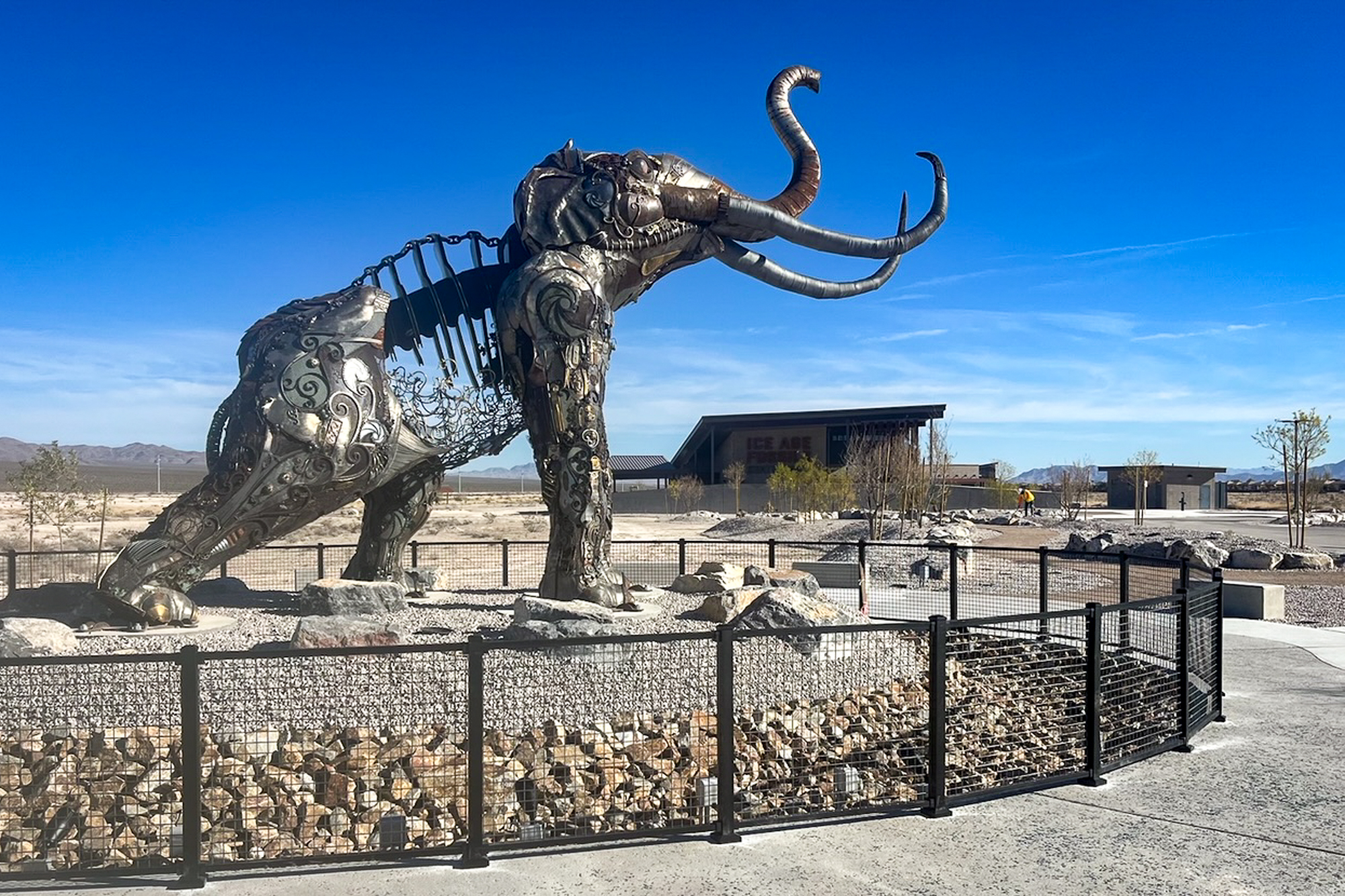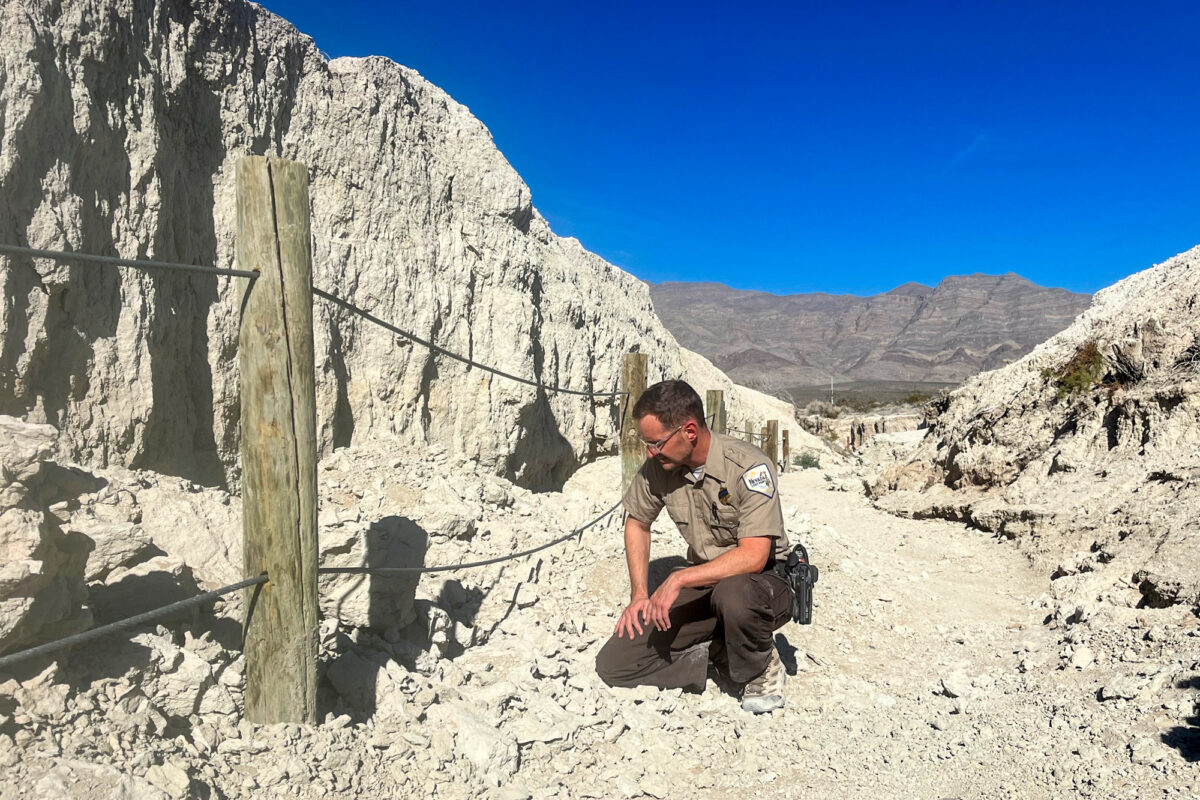Indy Environment: January opening announced for Southern Nevada’s Ice Age Fossils State Park

Good morning, and welcome to the Indy Environment newsletter. I'm Amy Alonzo, the environment reporter for The Indy.
In 2017, then Gov. Brian Sandoval designated two new Nevada state parks — Ice Age Fossil and Walker River State Recreation Area. I had the opportunity to attend the 2018 opening of the recreation area while covering rural Nevada for the Mason Valley News, so it’s a treat to cover the upcoming opening of Ice Age Fossils State Park as well.
Backing up to a high school, residential development and a shooting range, Nevada’s newest state park is a bit of a surprise, housing fossils dating to the Ice Age, as well as some man-made historic sites.
Both parks are worthy venues for anyone looking to explore more of Nevada’s history and excellent recreational opportunities. Read on for a Q&A with Ice Age Fossils’ superintendent.
Speaking of Nevada state parks … Administrator Bob Mergell told The Indy the new visitor center at Valley of Fire State Park is slated to open in June 2025. The visitor center is being constructed at a new location in the park, one of the state’s most popular attractions.
“It’s a tight timeline, but so far, we’ve hit all of our benchmarks on the project, so I have my fingers crossed,” he said.
I’d also like to take a moment this week to recognize environmental reporter and special projects editor Daniel Rothberg, who left The Indy last week after six years.
Longtime Indy readers know Daniel for his excellent, in-depth environmental coverage, especially pertaining to water in the West, and as the founder of this newsletter. I know him as a thoughtful reporter, someone who wasn’t afraid to challenge an editor or honestly critique one of my stories.
Daniel will continue to freelance for us, but his presence in our newsroom will be missed.
To get this newsletter in your inbox, subscribe here.

It’s hard to keep up with Ice Age Fossils State Park Supervisor Garrett Fehner as he bustles from the park office to the maintenance yard to a new trailhead.
He moves at a rapid clip, with the air of someone running up against a tight deadline.
That’s because he is.
After several delays, the park finally has an official opening date — Jan. 20.
Ice Age Fossils State Park’s 315 acres were designated a state park in 2017 by former Gov. Brian Sandoval as part of his “Explore Your Nevada” initiative. Walker River State Recreation Area in Lyon and Mineral counties was designated at the same time.
In April, Nevada State Parks announced Ice Age Fossils would open this fall. That date was pushed back as a delay in materials prevented workers from finishing shade structures and a large picnic area.
With the materials delivered, workers are hustling to open the park to the public next month.
Unlike Walker River State Recreation Area, which combined the former Pitchfork, Rafter 7 and Flying M ranches along the East Fork of the Walker River and had some buildings already in place, Ice Age Fossil State Park had no infrastructure in place or ways to let people explore the park while simultaneously protecting sensitive resources such as fossils and historic excavation sites.
Thousands of Pleistocene (Ice Age) fossils are found within the park and adjacent Tule Springs Fossil Beds National Monument, which borders the state park on three sides. Fossils include those from Columbian mammoths, giant ground sloths, camels and large cats that roamed the area from 100,000 to 12,500 years ago.
The first fossils were found in the area in 1903, when a member of the U.S. Geological Survey reported finding teeth and bones around the upper Las Vegas Wash. Exploratory interest in the area peaked in 1962-63, when scientists dug massive trenches to learn whether humans and animals coexisted at the site. Known as the Big Dig, the trenches are one of the focal points of the new state park.
Now, a visitor center offers a space to talk with a ranger, watch a 10-minute film about the area’s history and admire the Monumental Mammoth, a life-size sculpture inspired by the area’s former residents that debuted in 2019 at the Burning Man festival. Future plans for the park include a paleontology lab and fossil repository.
Visitors will also be able to explore the park’s three distinct trails either individually or as part of a larger loop.
Megafauna Trail: At 0.3 miles long, the hard-packed decomposed granite trail is intended for users of all skill levels and abilities. It features metal sculptures of the prehistoric animals that once roamed the Las Vegas Valley and interpretive signs that include tactile recreations of the fossils found at the site.
Las Vegas Wash Trail: The 1.5-mile-long trail wanders through the usually dry wash and can be done on its own or as a connector to the Big Dig Trail.
Big Dig Trail: The 1.2-mile-loop works its way through the trenches dug during the Big Dig, offering glimpses of fossils.
With work at the $12 million park nearing completion, Fehner took a break from planning to give The Nevada Independent a tour of the site and to talk about the park’s upcoming opening. The following has been edited for length and clarity.
How do you manage a park that, thus far, has had no visitors?
It’s a unique position. Most supervisors have an open, functioning park. Starting out, I was deeply involved in the planning process — how do we turn the 315 acres into something the public can utilize but [that] protects the resources as well?
How did you protect resources and minimize vandalism while the park was being built?
The public had access to the property and there was a lot of misuse. We’ve been working really hard to correct peoples’ behaviors. We have issues with dirt bikes, mountain bikes, sometimes people do go looking for fossils. They want a souvenir. You have to go out and make contact that [informs people], “No, this is a protected resource that belongs to all Nevadans. If you take it away, we’ll never understand the significance.”
How will the park’s resources be protected going forward?
This is a stay-on-the-trail park. You can tell from the name it protects a sensitive resource. We’ve put in a trail system that’s almost 4 miles of trail that interconnects. A visitor can show up and choose their own adventure. They take you through the Las Vegas Wash, excavation sites — you will be able to see the majority of the park via the park trails.
What are the last few things under construction?
Shade structures. There are no trees and 4 miles of trail, and it’s really important we have some kind of means for people to cool down on the trail. Considering the park has “Ice Age” in its name, we were concerned people wouldn’t be prepared for the heat.
What’s your favorite part of the park?
There’s a history of scientific investigation in this park that dates back a century. It triggered an expedition called the Big Dig … These trenches are still there, and all these hand-dug excavation sites. You can look at one of these excavation sites as it looked in the 1950s and ’60s. I’m a history person, so for me it’s really fun to see the past come to life.
What’s something unique about the park people should know?
Dire wolves, mammoths, giant ground sloths — these were the residents here in Las Vegas until about 12,000 years ago. That paints a unique picture of what Southern Nevada looked like. That’s kind of an unexpected Las Vegas story. We’re right on the edge of one of the most famous cities in the world, and we had these animals here. And we can see their fossils.
What caused such a heavy concentration of fossils here?
There were at times wetlands, ponds, marshes — that water nurtures life, which attracts wildlife. The wildlife dies and gets covered up and embedded by dirt. You go out now and it’s all badlands. It’s really hard to imagine what it looked like back in the day when you had water, tule reeds and animals out here as well.
What’s the most recent fossil discovery out here?
I can’t say. We find new things all the time, particularly after it rains — it reshapes the badlands here and exposes the fossils.

Here’s what else I’m watching this week:
California’s Imperial Irrigation District, the largest user of Colorado River water, will receive more than $77 million in federal money for conserving 100,000 acre-feet of water, according to the Desert Sun.
Nevada tribes opposed to lithium mining at Thacker Pass are shifting their focus from lawsuits and appeals to a larger issue — the General Mining Act of 1872, according to the Nevada Current.
A thoughtful and detailed read in High Country News exploring the invasive nature of a ubiquitous Christmas symbol.
